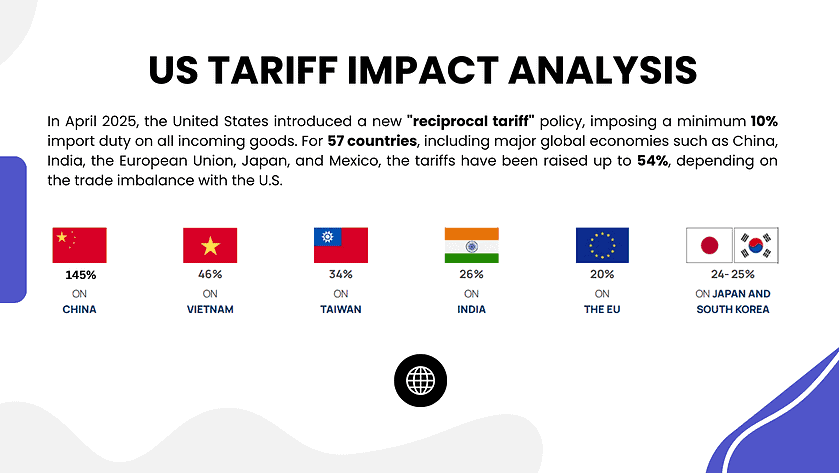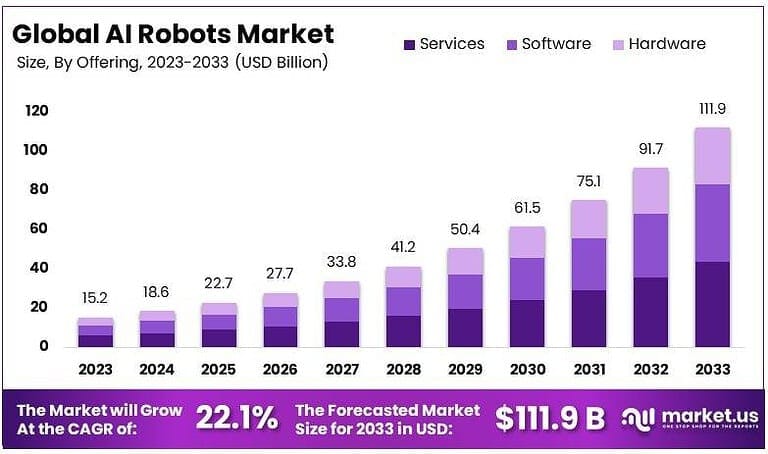Global AI Robots Market Analysis: Growth, Trends, and Tariff Impact
The global AI Robots Market is experiencing rapid growth, with an expected market value of USD 111.9 billion by 2033, up from USD 15.2 billion in 2023. This represents a compound annual growth rate (CAGR) of 22.1% from 2024 to 2033. The market is driven by increasing demand for AI-driven solutions, particularly in industries such as manufacturing, healthcare, and logistics.
US Tariff Impact on the Market
The imposition of US tariffs on imported components and robots has significantly impacted the global AI robots market. Increased production costs for manufacturers in the US have affected the final cost of AI-driven robots, leading to potential reductions in production and delays in product availability. Sectors like manufacturing, healthcare, and logistics have been particularly affected, with increased operational costs and unpredictability of future tariffs potentially slowing market expansion.
Impact by Sector
- Manufacturing (20%): Tariffs have increased the cost of manufacturing robots, affecting profitability.
- Healthcare (15%): The medical sector faces delays and price hikes in robotic surgical tools.
- Logistics (10%): Tariffs on robotic components have increased operational costs for warehousing and fulfillment businesses.
Regional Analysis
North America leads the global AI robots market with a 33% share, driven by technological advancements and high demand for AI-driven solutions. Europe and Asia-Pacific are also growing rapidly, with countries like Germany and Japan focusing on AI robot innovations for industrial applications. Regions like Latin America and the Middle East are beginning to explore AI robotics, creating new growth opportunities.
Business Opportunities
The AI robotics market presents numerous business opportunities, particularly in sectors such as manufacturing, healthcare, and logistics. Companies can capitalize on the demand for automation solutions that improve efficiency and reduce operational costs. Partnerships with local manufacturers in countries with favorable tariff policies can help mitigate cost increases.
Key Segmentation
- By Offering: Hardware (60%), Software (30%), Services (39%)
- By Robot Type: Industrial Robots (60%), Service Robots (40%)
- By Technology: Machine Learning (35%), Natural Language Processing (25%), Computer Vision (20%), Others (20%)
- By End-User Industry: Manufacturing (45%), Healthcare (25%), Logistics (20%), Others (10%)
Conclusion
The AI robots market is expected to experience substantial growth driven by technological advancements and increasing demand across various sectors. While tariffs have presented challenges, innovative solutions and strategic adaptations are paving the way for sustained market expansion. Significant business opportunities exist for both established and new players in the market.




